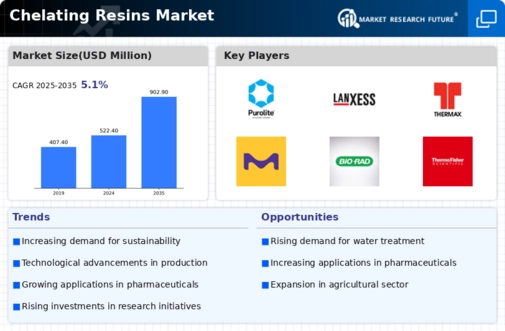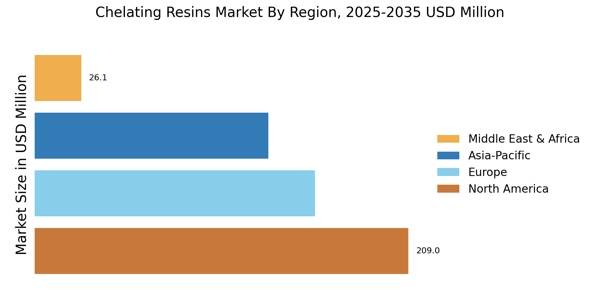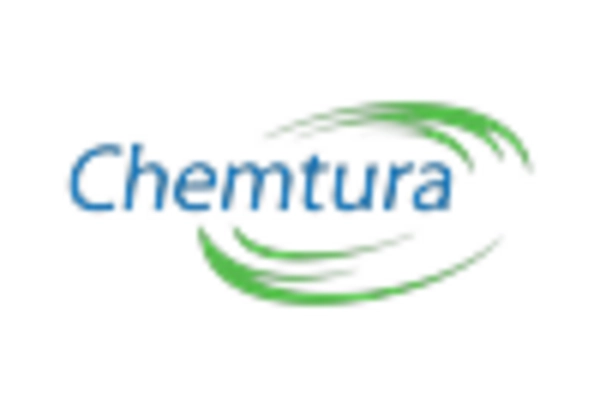Rising Demand in Water Treatment
The Chelating Resins Market is experiencing a notable increase in demand due to the growing need for effective water treatment solutions. As industries and municipalities seek to address water quality issues, chelating resins are becoming essential for removing heavy metals and other contaminants. The market for water treatment chemicals, including chelating agents, is projected to reach USD 50 billion by 2026, indicating a robust growth trajectory. This trend is driven by stricter regulations on water quality and the need for sustainable practices in water management. Consequently, the Chelating Resins Market is poised to benefit from this rising demand, as these resins play a critical role in enhancing the efficiency of water purification processes.
Expanding Applications in Pharmaceuticals
The Chelating Resins Market is witnessing an expansion in applications within the pharmaceutical sector. Chelating resins are utilized for drug formulation, particularly in the removal of metal impurities that can affect drug efficacy and safety. The pharmaceutical industry is projected to grow at a CAGR of 5.5% through 2027, which suggests a corresponding increase in the demand for high-purity chelating resins. As pharmaceutical companies prioritize quality control and regulatory compliance, the role of chelating resins becomes increasingly vital. This trend indicates that the Chelating Resins Market will likely see sustained growth as it aligns with the evolving needs of the pharmaceutical sector.
Technological Innovations in Resin Production
The Chelating Resins Market is benefiting from technological innovations that enhance the production and performance of chelating resins. Advances in polymer chemistry and manufacturing processes are leading to the development of more efficient and effective chelating agents. For instance, the introduction of high-capacity resins has improved the ability to capture and remove metal ions from various solutions. This innovation is particularly relevant in sectors such as mining and metallurgy, where the demand for efficient metal recovery processes is increasing. As these technologies continue to evolve, the Chelating Resins Market is expected to experience growth driven by enhanced product offerings and improved operational efficiencies.
Regulatory Drivers and Compliance Requirements
The Chelating Resins Market is significantly shaped by regulatory drivers and compliance requirements across various sectors. Governments and regulatory bodies are implementing stringent guidelines to control the use of hazardous substances, particularly in industries such as water treatment and pharmaceuticals. Compliance with these regulations often necessitates the use of chelating resins to ensure the safe removal of toxic metals and contaminants. As a result, the market for chelating resins is likely to expand as companies invest in compliant solutions to meet these regulatory standards. This trend underscores the importance of chelating resins in facilitating adherence to environmental and safety regulations, thereby driving growth in the Chelating Resins Market.
Increased Focus on Environmental Sustainability
The Chelating Resins Market is significantly influenced by the heightened focus on environmental sustainability. As industries strive to minimize their ecological footprint, the demand for eco-friendly chelating agents is on the rise. Many companies are transitioning to biodegradable and less toxic alternatives, which is reshaping the market landscape. The global market for green chemicals, which includes sustainable chelating agents, is expected to reach USD 150 billion by 2025. This shift towards sustainability not only enhances the reputation of companies but also aligns with consumer preferences for environmentally responsible products. Thus, the Chelating Resins Market is likely to thrive as it adapts to these changing dynamics.


















Leave a Comment